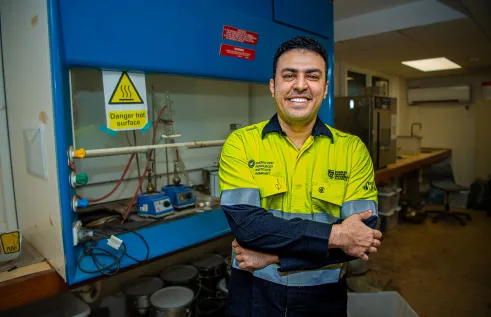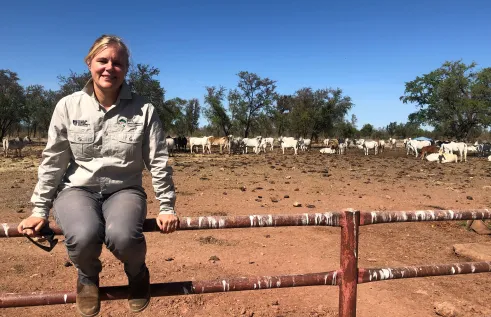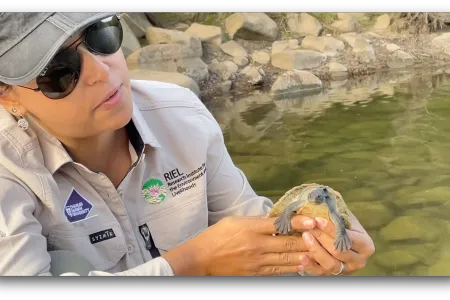Tags to track and preserve Mary River turtles
Researchers from Charles Darwin University (CDU) are trying to find a solution to help recover the Mary River turtle population by tracking their movements with an acoustic device.
Dr Mariana Campbell from CDU’s Research Institute for the Environment and Livelihoods have undertaken a field exercise in Queensland, where they installed small acoustic devices on turtles released into the water.
Each device contains a unique code that changes once activated by the enzyme in the predator’s stomach if the turtle gets eaten.
She suspects that most of the turtles are predated by oversized catfish native to the Mary River, and the population of freshwater turtles are almost depleted.
“Through our research, we hope to find out the culprit for this population decline and a solution to preserve the population,” Dr Mariana Campbell said.
“Freshwater turtles don’t get as much attention as sea turtles, maybe because they are not as charismatic and are not well studied,” she said.
“We hope to develop a solution to help recover the freshwater turtle population, which can be applied to other species in Australia and around the world.”
The research is a collaboration between CDU, SunWater water authority and the local community group Tiaro & District Landcare Group, and is a long-term collaboration with local conservation groups and the community.
In the 1960s and 70s, there was extensive egg collection of the Mary River turtles for the pet trade, causing the population to decline rapidly.
There is a local nest protection program that aims to preserve the number of turtles, but Dr Campbell’s research suggests the hatchlings have low survival rates once in the water.
“We are trying to figure out what is happening to the turtles once they are in the water, also which head-starting program is more viable,” Dr Mariana Campbell said.
In a recent field trip, Dr Campbell released a batch of 15-month-old turtles to Mary River and continued monitoring their movements through the tag.
An array of listening devices has been installed underwater to actively track the turtles’ locations. If a turtle gets eaten by a catfish, the catfish can be tracked down and caught if needed.
Dr Campbell plans to release another batch that tests the viability of the head-starting program, which involves keeping the turtle hatchlings in captivity until they reach a certain age.
The research will help us understand the diminishing Mary River turtle population and find ways to revive the species.
Related Articles

Where rubber meets the road: Old tyres are key to building tougher roads
Almost half of the Northern Territory’s worn-out tyres end up in landfills – with the rest exported interstate for recycling – but a study led by Charles Darwin University (CDU) is repurposing the discarded rubber to build stronger, sustainable roads that meet the NT’s unique needs.
Read more about Where rubber meets the road: Old tyres are key to building tougher roads
Social media subjecting Black women to radicalised digital policing
Influencers use oppression, manipulation and weaponisation to police Black women on social media, according to new research uncovering the entrenched nature of digital racism.
Read more about Social media subjecting Black women to radicalised digital policing
Moo-ving the boundaries: New research evaluates virtual fences for use on NT cattle stations
Cattle producers in Northern Australia face unique challenges when adapting tools like virtual fences on their properties, but new research from Charles Darwin University (CDU) is set to break down the barriers to this technology.
Read more about Moo-ving the boundaries: New research evaluates virtual fences for use on NT cattle stations
